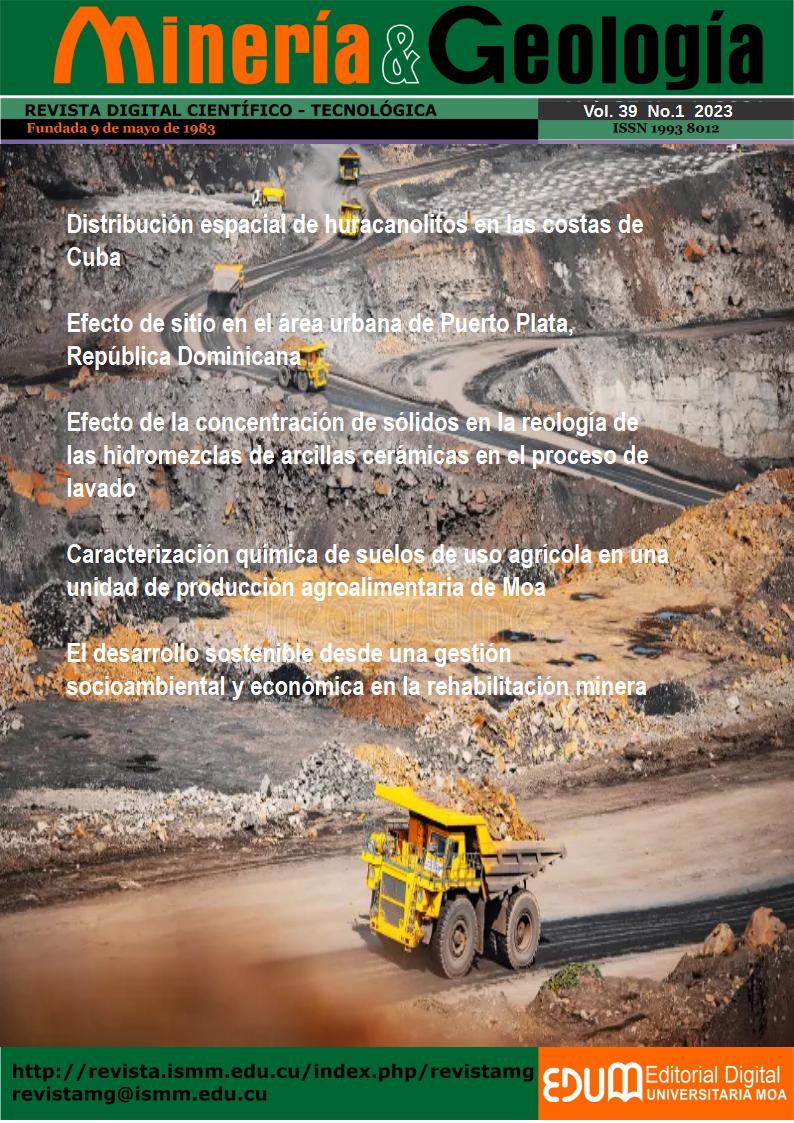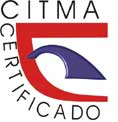Spatial distribution of coastal boulders in Cuba
Keywords:
boulders, risk prevention, Cuban coast, extreme waves, Task Life in CubaAbstract
Blocks transported or moved by the energy of large waves have been the subject of research in different geographical areas of the planet, including some areas of the Caribbean. In Cuba, other authors have identified coastal sectors with the presence of these accumulations; however, a project included in the National Program “Integral Characterization of the Geology of Cuba” allowed for an update of these deposits in coastal areas. This work is aim to develop a new national map with the spatial distribution of coastal boulders. The importance of this result lies in the connection with the extreme wave events that have affected the shores of the Cuban island, both in the past and in the present, a topic that, at the same time, is closely related to Life Task program, especially with the Prevention of Disaster Risks on the coastal zones of Cuba.Downloads
References
Aguirre, G. M.; Matos, F. y Sánchez, A. 2021: Estudio bibliométrico sobre la producción científica de huracanolitos en la costa de Cuba. Avances, 23(1): 40–60.
Engel, M.; May, S. M.; Brill, D.; Cuadra, C.; Lagmay, A.; Santiago, J.; Suarez, J. K.; Hoffmeister, D. and Brückner, H. 2016: Boulders shifted during Supertyphoon Haiyan (7–9 Nov 2013) – Observations from Eastern Samar (Philippines). Geophysical Research Abstracts, 18, EGU2016-15390.
Furrazola, G. F. y Núñez, K. E. 1997: Estudios sobre geología de Cuba / compilación. Centro Nacional de Información Geológica. Editado por: Centro Nacional de Información Geológica (CNDIG), Instituto de Geología y Paleontología, 509-527.
Goto, K.; Chavanich, S.A.; Imamura, F.; Kunthasap, P.; Matsui, T.; Minoura, K.; Sugawara, D. and Yanagisawa, H. 2007: Distribution, origin and transport process of boulders transported by the 2004 Indian Ocean tsunami at Pakarang Cape, Thailand. Sediment. Geol. 202(4): 821-837.
Goto, K.; Kawana, T. and Imamura, F. 2010: Historical and geological evidence of boulders deposited by tsunamis, southern Ryukyu Islands, Japan. Earth-Science Rev. 102: 77–99.
Goto, K.; Miyagi, K.; Kawamata, H. and Imamura, F. 2010: Discrimination of boulders deposited by tsunamis and storm waves at Ishigaki Island, Japan. Marine Geology 269: 34–45.
Goto, K.; Miyagi, K.; Kawana, T.; Takahashi, J. and Imamura, F. 2011: Emplacement and movement of boulders by known storm waves — Field evidence from the Okinawa Islands, Japan. Marine Geology 283: 66-78.
Goto, K.; Okada, K. and Imamura, F. 2009: Characteristics and hydrodynamics of boulders transported by storm waves at Kudaka Island, Japan. Marine Geology 262, 14–24.
IPCC 2014: Cambio climático 2014. Impactos, adaptación y vulnerabilidad. In: Field, C. V.; Barros, V. R.; Jon Dokken, D.; Mach, K. J.; Mastrandrea, M. D.; Bilir, T. E.; Chatterjee, M.; Ebi, K. L.; Otsuki, Y.; Genova, R. C.; Girma, B.; Kissel, E. S.; Levy, A. N.; Maccracken, S.; Mastrandrea, P. R.; White, L. L. (Eds.). Ginebra, Suiza.
Iturralde-Vinent, M. A. (Editor). 2009: Geología de Cuba para todos. Editorial Científico–Técnica. La Habana: Instituto del Libro. 150 p.
Iturralde-Vinent, M. A. 2017: Huracanolitos, eventos de oleaje extremo y protección de las obras costeras. Consultado: 20/02/2023. Disponible en: http://www.redciencia.cu/geobiblio/inicio.html.
Iturralde-Vinent, M. A. (Editor). 2010: Geología de Cuba para todos. La Habana: Editorial Científico–Técnica. 150 p. (Segunda edición).
Magaz, A. R. y Portela, A. H. 2017: Huracanolitos: las huellas de tormentas colosales en las costas de Cuba. Cuba Geográfica, (2)5: 1-10.
May, S. M.; Engel, M.; Brill, D.; Cuadra, C.; Lagmay, A.; Santiago, J.; Suarez, J. K.; Reyes, M. and Brückner, H. 2015: Block and boulder transport in Eastern Samar (Philippines) during Supertyphoon Haiyan. Earth Surface Dynamics, 3: 34.
Núñez-Jiménez, A. 1959: Geografía de Cuba. La Habana: Editorial Lex. 545 p.
Núñez-Jiménez, A. 1982: Cuba, La Naturaleza y el Hombre: Bojeo. La Habana: Letras Cubanas. 702 p.
Peros, M. C.; Gregory, B. R.; Matos, F.; Reinhardt, E. G. and Desloges, J. P. 2015: Late Holocene record of lagoon evolution, climate change, and hurricane activity from southeastern Cuba. The Holocene, 25: 1483-1497.
Planos, E.; Vega, R. y Guevara, A. 2013: Impacto del Cambio Climático y Medidas de Adaptación en Cuba. La Habana: Agencia de Medio Ambiente, Ministerio de Ciencia, Tecnología y Medio Ambiente. 430 p.
Rodríguez, A. y Acosta, E. 2017: Megabloques en Trinidad: Generalidades de su morfometría. Serie Oceanológica, 16. 7 p.
Sánchez, A.; Peralta, M. J. y Matos, F. 2019: Análisis de dominio sobre riesgos y clima en la Web of Science. Bibliotecas. Anales de Investigación, 15(3): 295-314.
Scheffers, A. M. 2005: Coastal response to extreme wave events e hurricanes and tsunamis on Bonaire. Essener Geographische Arbeiten, 37.
Scheffers, A. M. and Kelletat, D. 2003: Sedimentologic and geomorphologic tsunami imprints worldwide—A review. Earth-Science Rev. 63, 83–92.
Scheffers, A.M. and Kelletat, D. 2006: New evidence and datings of Holocene paleotsunami events in the Caribbean (Barbados, St. Martin and Anguilla). In: MERCADO-IRIZARRY, A.; LIU, P. (Eds.). Caribbean Tsunami Hazard. Singapore: World Scientific. 178-202.
Scheffers, A. M. and Scheffers, S. R. 2006: Documentation of Hurricane Ivan on the coastline of Bonaire. J. Coastal Res. 22: 1437–1450.
Scheffers, A. M.; Scheffers, S. R. and Kelletat, D. 2005: Paleo-tsunami relics on the southern and central Antillean Island Arc. J. Coastal Res., 21: 263–273.
Published
How to Cite
Issue
Section
Copyright (c) 2023 Felipe Matos Pupo, Alder Luis Leon Brito, Ricardo Seco Hernandez, Matthew Charles Peros

This work is licensed under a Creative Commons Attribution-NonCommercial 4.0 International License.
- Authors retain copyright and guaranteeing the right magazine to be the first publication of the work as licensed under a Creative Commons Attribution-NonCommercial that allows others to share the work with an acknowledgment of the work's authorship and initial publication in this journal.
- Authors may establish separate supplemental agreements for the exclusive distribution version of the work published in the journal (eg, place it in an institutional repository or publish it in a book), with an acknowledgment of its initial publication in this journal.
- Authors are allowed and recommended to disseminate their work through the Internet (e.g., in institutional telematic archives or on their websites) before and during the submission process, which can produce interesting exchanges and increase citations of the published work. (See The effect of open access)










